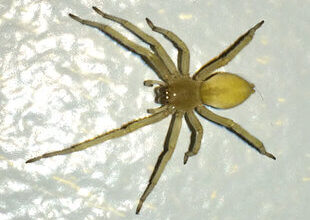History of Munich
Brief history of Munich summarized
A brief history of Munich, by way of summary.
The beginnings of Munich
Munich traces its origins to a Benedictine monastery at Tegernsee, founded in the 8th century. The year 1158 is supposed to be the founding date of Munich, by Henry the Lion, which is only the earliest date the city is mentioned in a document.
In 1157 Henry the Lion, Duke of Bavaria, granted the monks the right to establish a market where the road from Salzburg crossed the Isar river. The following year a bridge was built over the Isar and the market was fortified.
In 1175 Munich was granted city status and fortified. In 1180 Otto I Wittelsbach became Duke of Bavaria and Munich was given to the Bishop of Freising. The Wittelsbach dynasty ruled over Bavaria until 1918.
In 1255 it was chosen as the residence of the Wittelsbach family, the Dukes of Bavaria and later became (1506) the capital of the duchy.
Munich in the Modern Age
During the Thirty Years’ War, Munich was occupied (1632) by Gustaf II of Sweden.
In 1806 the city became the capital of the Kingdom of Bavaria. Under Kings Ludwig I (1825-48), Maximilian II (1848-64) and Ludwig II (1864-86), Munich became a cultural and artistic center and played a leading role in the development of German painting. the nineteenth and twentieth centuries.
Twentieth century
After World War I, the city was the scene of considerable political unrest.
National Socialism (Nazism) was founded there, and on November 8, 1923, Adolf Hitler failed in his attempted “coup” in Munich, a coup against the Bavarian government. Despite this fiasco, Hitler made Munich the headquarters of the Nazi party, which in 1933 took control of the German national government.
Cardinal Michael Faulhaber, Archbishop of Munich, was one of the few direct critics of the National Socialist regime. In September 1938, the Munich Pact was signed in the city; in 1939 Hitler suppressed a Bavarian separatist plot there.
During World War II, Munich was bombed and the city’s population sank from around 800,000 to 500,000 (during the World War II years people moved out of Munich).
Munich was completely rebuilt following a meticulous and rather conservative plan (compared to other war-torn German cities), which preserved its pre-war network of streets. The population of Munich exceeded one million inhabitants in 1957.
In 1973 it hosted the Olympic Games, for which the Olympic stadium and the subway were built. Munich remains the capital of Bavaria, and it is where German chancellor candidate Edmund Stoiber has his seat of power.
Munich today
In the past, Munich suffered economically due to its distance from the seaports and coal mines of the Ruhr area. But this situation improved when the use of fuels other than coal became widespread.
Munich moved from heavy to light industry, manufacturing, for example, precision instruments, optical and electrical apparatus, and aerospace and other high-tech products, as well as the production of food, cosmetics, and clothing.
The city has several of the largest breweries in Germany and is famous for its beer and its annual Oktoberfest celebration. Munich is also a major tourist destination and a convention center.
Book publishing and printing (Süddeutscher Verlag, etc.) and television production (SevenOne, Arena, Constantin, etc.) are also important. BMW, Allianz, Siemens (Berlin/Munich) and Linde are some of the largest employers.
Today, the Bavarian capital (with a population of 1.5 million) is the third largest city in Germany after Berlin and Hamburg, but Munich is economically the strongest city in the country, and this is unlikely to change soon. Despite the high cost of living and high rents, many young entrepreneurs are starting new businesses.
A modern, cosmopolitan city, with a big heart and a long heritage, as smooth as it is calm, bustling and calm at the same time. Munich is the lifestyle capital of Germany.
Munich residents are also proud of the city’s art and music scene and museums, such as the Deutsches Museum, the world’s largest science and technology museum, the Alte Pinakothek, the Neue Pinakothek, the Pinakothek der Moderne, the Lenbachhaus Museum and others.
Share the brief history of Munich.

